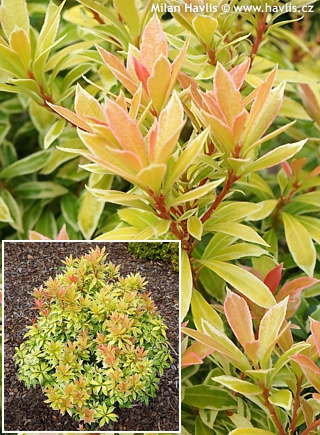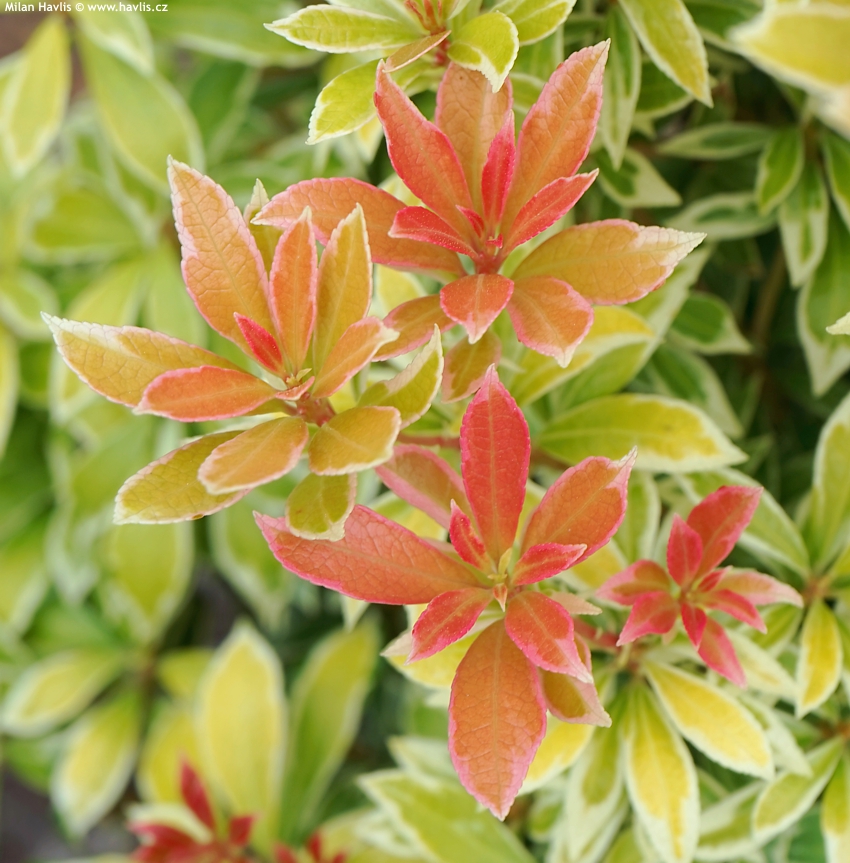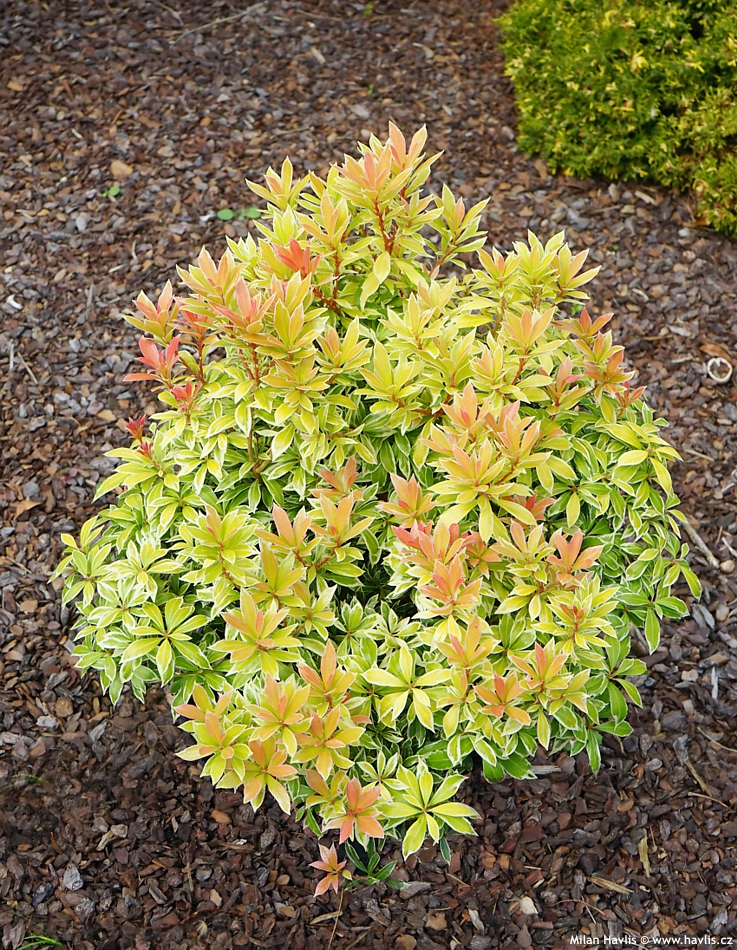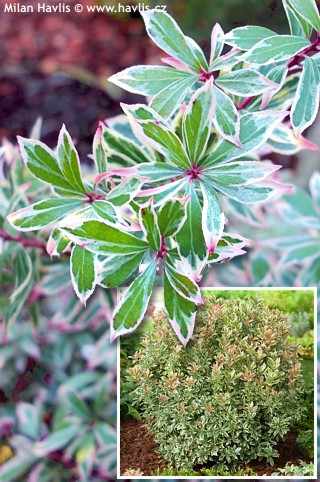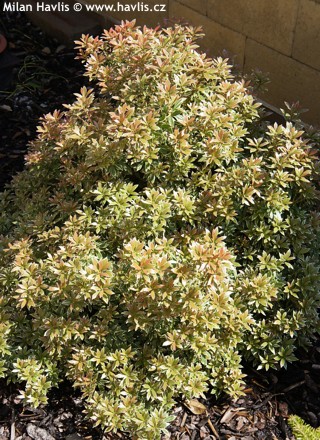Pieris japonica 'Opstal65' LITTLE GOLDY lily-of-the-valley shrub


Pieris
Lily-of-the-valley shrubs are very popular ericaceous plants with attractive foliage and abundant flowering. There are so many varieties already that you think it impossible that breeders could come up with a new one, distinctly different from the others. Ron van Opstal is a Dutch breeder whose achievements are mostly evergreen. No wonder that pieris is one of them.LITTLE GOLDY is rather slow growing and makes a uniform, rounded, evergreen shrub which needs no pruning to remain handsome. Yet clipping and pruning is possible any time from spring until midsummer. The breeder mentions short clusters of white, urn-shaped flowers in early spring, however, we have not witnessed any yet, and possibly, just like some other dwarf pieris varieties, this one, too, might be a little shy when it comes to flowering. In any case, if the flowers do appear make sure to remove them soon after flowering to prevent production of seeds that exhaust the plant and make it look untidy.
Ericaceous plants require soil that is light, on the acidic side, and constantly moist (not wet). If your garden soil is too heavy do not dig a deep hole but make a shallow and wide bed topped up with a good mixture of peat, fine bark chips, and leaf mould. Keep the soil moist and protected from temperature swings by mulching. Slow-release fertilizers are advised. Pieris does best in sun or partial shade. Expected hardiness is about -27°C (USDA zone 5b).
Last update 11-06-2020
Goods are shipped all over Europe. For Russia and U.K. and for further details please read about SHIPPING OPTIONS HERE.
Are you interested in a serious discount for orders NOV-FEB? Check your options here.
THE PRICES INCLUDE VAT of 15%. For quick conversion you can use 1 CZK = approx. 0.04 EUR
- STANDARD QUALITY - Plants of this group are 1st class quality with number of branches and overall density adequate to their size and age, considering they were container grown.
- DE LUXE QUALITY - This label guarantees a luxurious quality of manually selected plants that, compared to their height and age, are exceptionally dense and beautiful.
- EXTRA - These plants are usually mature and bigger specimens with exceptional overall appearance.
- STANDARD (as described in the plant form) means a tree with a trunk of 190-210 cm and a crown at the top, unless specified differently. The commercial size for trees is their girth measured in the height of 1m from ground.
- HOBBY - These plants are of the same quality as our standard-quality plants but younger and therefore cheaper.
- SHRUB - a woody plant with branches growing bushy from the ground level.
- HALF-STANDARD or MINI-STANDARD - a small tree with shorter trunk, its size is usually specified.
- FEATHERED - These are trees with branches growing already from the base of the trunk and up along the stem.
- GRASSES and PERENNIALS - Sizes given usually read the diameter of the pot or the clump, as specified.












